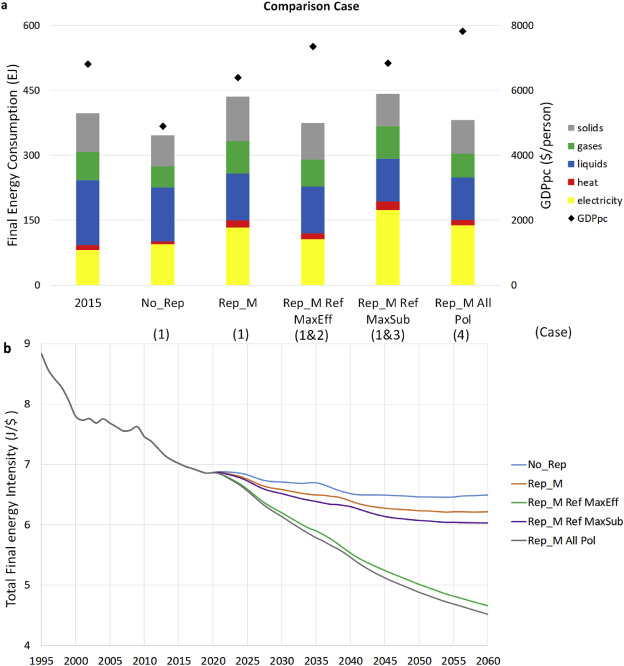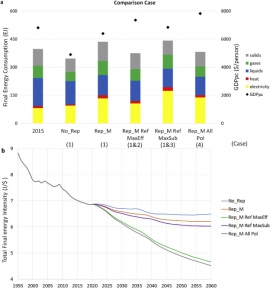Ignacio de Blas, Luis Javier Miguel and Iñigo Capellán-Pérez, MEDEAS partners from the University of Valladolid (UVa), have published a paper related with the methodology of estimation the energy demand throught the energy intensities in MEDEAS models, in Energy Strategy Reviews Journal, Volume 26 from November 2019.
The estimation of future energy demand is a key factor for the development of effective alternative policies towards a low carbon economy. The paper describes a novel method to estimate the energy demand in the new integrated assessment framework MEDEAS based on the projection of sectoral final energy intensities. The dynamic of each of the sectoral final energy intensity is broken down into (1) improvement in energy efficiency and (2) substitution of the final energy. The speed of changes in these factors depend on physical supply-demand unbalances in the market, climate mitigation and other energy saving policies and the perception of scarcity of the different economic agents. The simulated case studies in MEDEAS-World under the narrative of the Business-as-usual (BAU) scenario have allowed validating the model's robustness and showing the potentiality of its application.
Link to the publication can be found here.


